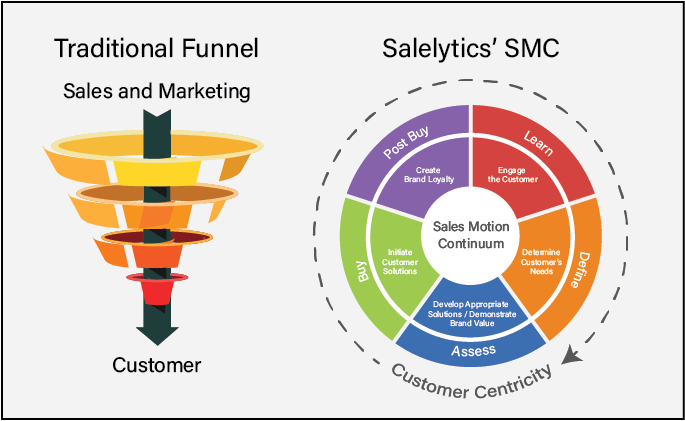When I was in college, I distinctly remember sitting in my professional sales class when my professor first broached the topic of inside sales. The student sitting next to me looked confused and said “like, selling, indoors?”. Technically speaking they weren’t wrong, but it was a reminder that most people are completely unfamiliar with the concept of inside sales. If you ask the average person to imagine someone making a sale, most will envision someone in a suit, meeting with a client face-to-face, shaking their hand, and proceeding to pitch whatever product or service. Very few will ever mention talking over the phone or any other kind of remote communication. As technology continues to improve it has become easier and easier to connect with customers remotely. Whether you're a small business owner or a sales professional, understanding the ins and outs of inside sales can help you take your business to the next level. In this article, we will cover what inside sales are, why they are important, and some of the benefits of the strategy.
What is inside sales?
Salesforce defines inside sales simply as “a way of handling sales remotely.” Inside sales is commonly thought of as a selling process via phone, email, or social media. Inside Sales takes place remotely from an office space environment, allowing your sales representatives to work “inside” the office, hence the term inside sales. It differs from outside sales since it does not require face-to-face interaction with clients. If you want to learn more about the difference between inside and outside sales, check out our other article
here!
Why is it important?
In essence, inside sales helps streamline your sales process. With the integration of technology, your sales team can access analytics that optimizes current results and ultimately improve future sales, all while being scalable and flexible enough to adapt to market changes. In fact,
Zippia.com states that “Inside sales teams pay 40%–90% less to acquire new customers”, allowing you to reach more clients at a lower cost.
Technology
The backbone of every good inside sales team is its technology. Their sales stack gives them access to information about potential customers and analytics about their sales performance. Arguably the most vital tool to an inside sales rep is a Customers Relationship Management (or CRM) system. A CRM holds all the information about the customer's previous interactions with the company, purchase history, and consumer behavior, while providing detailed analytics for the employee. Using speech analytics tools like
Lingua can help provide insights on how to sell more efficiently and what your customer's sentiments are. These tools allow your team to gain invaluable data that when paired with AI can bring new trends to light about both your sales team's performance and customers' needs and wants.
Scalability
Let’s say your company hit the jackpot and just landed a new major client. It’s time to scale up and increase your sales force, but how?
Successful scalability can be broken into three parts, hiring new talent, training new hires, and having them meet their goals. When it comes to hiring, more and more employees are demanding the ability to work from home, and inside sales allows that transition. Finding top talent is always a challenge, but with the opportunity for remote work not only are you appealing to a large majority of potential employees, but you are also able to expand your hiring scope to different geographic areas, opening a new pool of candidates. Training inside sales reps isn’t necessarily easy (training never is) but there is a near-infinite number of tools at your disposal. Since many calls are documented, you can have a new employee hear examples and look at transcriptions of a successful call, show them data on what works and what doesn’t, and have them do practice role-plays all before they begin calling real customers. Once they have been hired and trained, it’s time for them to make their mark. Since technology is so integrated into inside sales, it is easy for managers to go through and give feedback to their newer employees. The CRM allows for easy data storage and automation, allowing the employee to focus on their performance. On top of that, many top companies have implemented gamification into their technology stack, providing additional motivation and fun for their employees. Inside sales lends itself to rapid scalability by appealing to new hires, having ease of training, and numerous tools to drive employee success.
Benefits of inside sales
Still not convinced of the value of inside sales? Here is a quick list of some of the benefits.
- Documentation of all interactions within a CRM System.
- Lower cost of implementation.
- Telephony to support calling vs. untracked from a cellphone.
- Scalability.
- Tools to sell the entire office.
- Ease of training.
- Maximized results with founded integrated technology and channels that include:
- Customer Relationship Management (CRM) - Communication channels.
- Digital Marketing.
- Data Analytics.
- Artificial Intelligence (AI).
Key Takeaways:
Inside sales is the process of selling remotely via phones, social media, or any other digital medium. Inside sales allows your company to convert sales at a lower cost while having the tools to support employee growth and rapid scalability.

![Solutions]() Overview Full Account Management Funnel Development Sole Territory Coverage Team Sell Customer Care Patient Centric International Support
Overview Full Account Management Funnel Development Sole Territory Coverage Team Sell Customer Care Patient Centric International Support![Industries]()
![Technology]() Overview Omnichannel Experience Sales Enablement Strategy Optimization Data Science and Language Technology
Overview Omnichannel Experience Sales Enablement Strategy Optimization Data Science and Language Technology![Careers]()
![About]()
![About]() Careers Current Open Positions Work From Home Professional Development Salelytics Recruiting Team About Salelytics Our Locations Contact Us Blog
Careers Current Open Positions Work From Home Professional Development Salelytics Recruiting Team About Salelytics Our Locations Contact Us Blog





.jpg)

.jpg)
.jpg)
